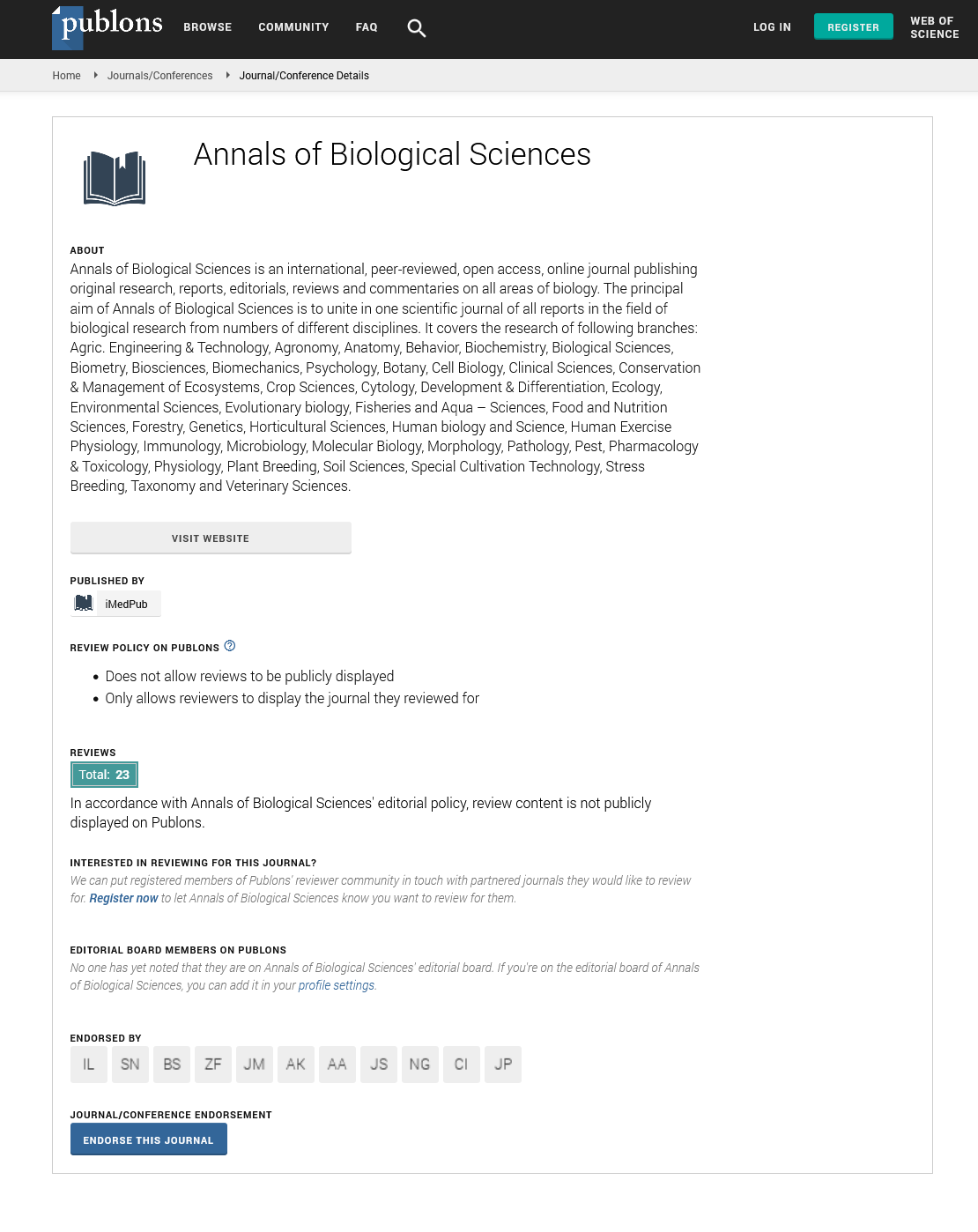Developing novel vaccines for neonatal immunization
ANNUAL BIOTECHNOLOGY CONGRESS
August 17-18, 2017 | Toronto, Canada
Azad K Kaushik
University of Guelph, Canada
ScientificTracks Abstracts: Ann Biol Sci
DOI: 10.21767/2348-1927-C1-002
Abstract
My laboratory discovered that some bovine antibodies are the largest known to exist in a species. This is because of generation of an exceptionally long CDR3H (up to 61 amino acids) which is encoded by an unusually long germline IGHD genes together with an unique insertion of ��?A� nucleotide rich conserved short nucleotide sequence at the IGHV-IGHD junction. The atypical CDR3H provides a ��?knob and stalk� structure capable of creating configurational diversity via variable intra-CDR3H disulfide bridges within the knob. The knob is held by the solvent exposed stalk formed by anti-parallel beta strands. I have exploited these structural features of the bovine antibody for the development of new therapeutics and vaccines. In this context, I will provide insights into the structural optimization of anti-viral bovine scFv to enhance their potency, apart from discussing influence of framework residues on viral neutralization function. I will provide ��?proof of concept��? for developing new vaccines by antigenizing bovine antibody with exceptionally long CDR3H that induce specific immune response. First, I successfully developed functional bovine scFv with an exceptionally long CDR3H followed by grafting of a viral B-epitope into the CDR3H. The grafted B-epitope in the exceptionally long CDR3H of bovine scFv sustained its native configuration and induced desired specific antibody response. Thus, antigenization of bovine scFv with an exceptionally long CDR3H provides a novel approach to developing new vaccines against infectious disease.
Biography
Azad K Kaushik has published two books Molecular Immunobiology of Self-Reactivity (1992) and Comparative Immunoglobulin Genetics (2014) and over 87 research articles. He is on the editorial boards of several immunology journals and is a Consultant to various international organizations. He was recognized as The Esther Z Greenberg Honors Chair in Biomedical Research, and Visiting Professor, Oklahoma Medical Research Foundation, USA, in 1998. He received BVSc&AH (Honors) in 1976 and MVSc (1978) from the Faculty of Veterinary Science, Hisar, Haryana, India; followed by Docteur es Science (DSc) in Immunology (1987) from the Pasteur Institute (University of Paris VII), Paris, France. He has been teaching Immunology at the University of Guelph since 1991.
Google Scholar citation report
Citations : 406
Annals of Biological Sciences received 406 citations as per Google Scholar report
Annals of Biological Sciences peer review process verified at publons
Abstracted/Indexed in
- Google Scholar
- China National Knowledge Infrastructure (CNKI)
- WorldCat
- Publons
- ROAD
- Secret Search Engine Labs
Open Access Journals
- Aquaculture & Veterinary Science
- Chemistry & Chemical Sciences
- Clinical Sciences
- Engineering
- General Science
- Genetics & Molecular Biology
- Health Care & Nursing
- Immunology & Microbiology
- Materials Science
- Mathematics & Physics
- Medical Sciences
- Neurology & Psychiatry
- Oncology & Cancer Science
- Pharmaceutical Sciences


